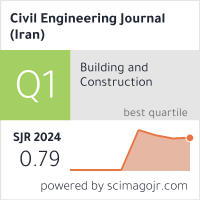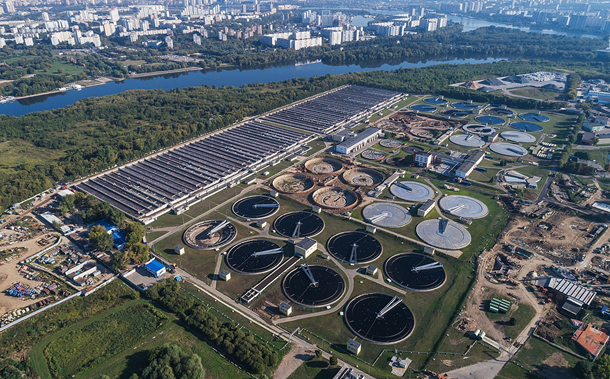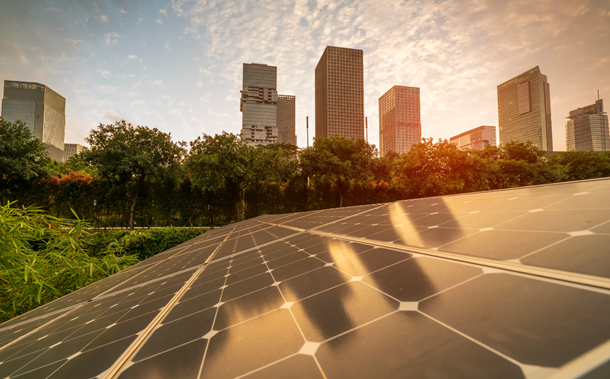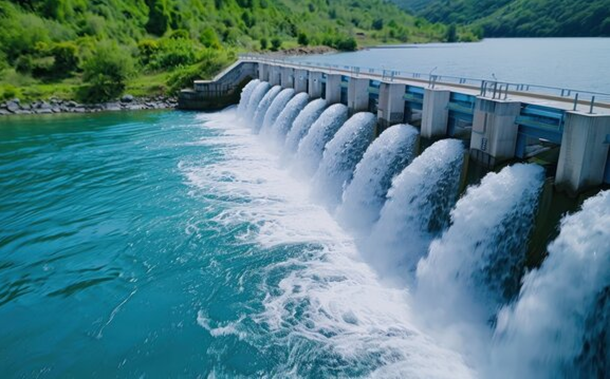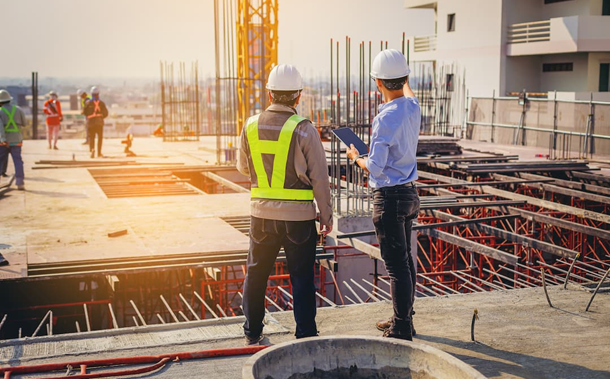Retrofit Design for Climate Resilient Housing: Strategies for Architectural Adaptation to Climate Change
Downloads
Doi:10.28991/CEJ-2025-011-03-011
Full Text:PDF
Downloads
[2] Mobini, S., Pirzamanbein, B., Berndtsson, R., & Larsson, R. (2022). Urban flood damage claim analyses for improved flood damage assessment. International Journal of Disaster Risk Reduction, 77, 103099. doi:10.1016/j.ijdrr.2022.103099.
[3] Pagliacci, F., Defrancesco, E., Bettella, F., & D'Agostino, V. (2020). Mitigation of Urban Pluvial Flooding: What Drives Residents' Willingness to Implement Green or Grey Stormwater Infrastructures on Their Property? Water, 12(11), 3069. doi:10.3390/w12113069.
[4] NCM (2023). Annual Climate Assessment 2022 United Arab Emirates. National Center of Metrology Emirates, Abu Dhabi - United Arab Emirates. Available online: https://www.maptiler.com/story/ncm-uae/ (accessed on February 2025).
[5] Sherif, M., Liaqat, M. U., Baig, F., & Al-Rashed, M. (2023). Water resources availability, sustainability and challenges in the GCC countries: An overview. Heliyon, 9(10), e20543. doi:10.1016/j.heliyon.2023.e20543.
[6] Daniel, B. (2024). Rainfall in UAE to jump 30% in our lifetime. The National, Abu Dhabi, United Arab Emirates. Available online: https://www.thenationalnews.com/weekend/2024/01/12/rainfall-in-uae-to-jump-30-in-our-lifetime-heres-what-that-means/ (accessed on February 2025).
[7] WAM. (2024). UAE witnesses' largest rainfall in 75 years. Emirates News Agency (WAM), Abu Dhabi, United Arab Emirates. Available online: https://www.wam.ae/en/article/13vbuq9-uae-witnesses-largest-rainfall-over-past-years (accessed on February 2025).
[8] Ebrahim, N., Gilbert, M. & Miller, B. (2024). Chaos in Dubai as UAE records heaviest rainfall in 75 years. Cable News Network (CNN), Atlanta, United States. Available online: https://edition.cnn.com/2024/04/17/weather/dubai-rain-flooding-climate-wednesday-intl/index.html (accessed on February 2025).
[9] Mbzuai, M. (2024). Dubai: Regional Case Study Before and After Rain. Available online: https://mbzuai.ac.ae/wp-content/uploads/2024/05/EmiratesAndOman_RainCaseStudy.pdf (accessed on February 2025).
[10] Chohan, A. H., Awad, J., Jung, C., & Sher, B. K. (2024). Enhancing Climate Resilience Against Flooding in Housing Design Through Synergistic Strategies in Pakistan. Future Cities and Environment, 10(1), 1-25. doi:10.5334/fce.226.
[11] Buchanan, M. K., Kulp, S., Cushing, L., Morello-Frosch, R., Nedwick, T., & Strauss, B. (2020). Sea level rise and coastal flooding threaten affordable housing. Environmental Research Letters, 15(12), 124020. doi:10.1088/1748-9326/abb266.
[12] Adger, W. N., de Campos, R. S., Siddiqui, T., Gavonel, M. F., Szaboova, L., Rocky, M. H., Bhuiyan, M. R. A., & Billah, T. (2021). Human security of urban migrant populations affected by length of residence and environmental hazards. Journal of Peace Research, 58(1), 50–66. doi:10.1177/0022343320973717.
[13] Anderson, N., Wedawatta, G., Rathnayake, I., Domingo, N., & Azizi, Z. (2022). Embodied Energy Consumption in the Residential Sector: A Case Study of Affordable Housing. Sustainability (Switzerland), 14(9), 5051. doi:10.3390/su14095051.
[14] Jordan, J. W., & Rogers, C. D. (2012). Flood Damage Evaluation for Residential Structures. Forensic Engineering 2012, 556–567. doi:10.1061/9780784412640.059.
[15] Šžen, Z. (2018). Flood Modeling, Prediction and Mitigation. Springer International Publishing, cham, Switzerland. doi:10.1007/978-3-319-52356-9.
[16] Alcantara, E., Marengo, J. A., Mantovani, J., Londe, L. R., San, R. L. Y., Park, E., Lin, Y. N., Wang, J., Mendes, T., Cunha, A. P., Pampuch, L., Seluchi, M., Simíµes, S., Cuartas, L. A., Goncalves, D., Massi, K., Alvalá, R., Moraes, O., Filho, C. S., ... Nobre, C. (2023). Deadly disasters in southeastern South America: flash floods and landslides of February 2022 in Petrópolis, Rio de Janeiro. Natural Hazards and Earth System Sciences, 23(3), 1157–1175. doi:10.5194/nhess-23-1157-2023.
[17] Dodman, D., Hayward, B., Pelling, M., Broto, V. C., Chow, W., Chu, E., & Muñoz, T. A. (2022). Cities, Settlements and Key Infrastructure. Climate Change 2022: Impacts, Adaptation, and Vulnerability. Contribution of Working Group II to the Sixth Assessment Report of the Intergovernmental Panel on Climate Change, Intergovernmental Panel on Climate Change (IPCC), Geneva, Switzerland. doi:10.1017/9781009325844.008.
[18] Taylor, J., Lai, K. man, Davies, M., Clifton, D., Ridley, I., & Biddulph, P. (2011). Flood management: Prediction of microbial contamination in large-scale floods in urban environments. Environment International, 37(5), 1019–1029. doi:10.1016/j.envint.2011.03.015.
[19] Tingsanchali, T. (2012). Urban flood disaster management. Procedia Engineering, 32, 25–37. doi:10.1016/j.proeng.2012.01.1233.
[20] Heibaum, M. (2014). Geosynthetics for waterways and flood protection structures - Controlling the interaction of water and soil. Geotextiles and Geomembranes, 42(4), 374–393. doi:10.1016/j.geotexmem.2014.06.003.
[21] Bignami, D. F., Rosso, R., & Sanfilippo, U. (2019). Flood Proofing Methods. Flood Proofing in Urban Areas, 69–108. doi:10.1007/978-3-030-05934-7_7.
[22] Faircloth, B., Zari, M. P., Thomsen, M. R., & Tamke, M. (2024). Design for Climate Adaptation: Proceedings of the UIA World Congress of Architects Copenhagen 2023. Springer Nature, Cham. Switzerland. doi:10.1007/978-3-031-36320-7.
[23] Shell, B. S. (2008). An Analysis of Waterproofing Systems and Materials. Master Thesis, Virginia Polytechnic Institute and State University, Blacksburg, United States.
[24] Khartode, B., Sulaiman, S., Shewale, M., & Bhirud, Y. L. (2024). Need and Awareness of Leakages and waterproofing in High rise Building. E3S Web of Conferences, 559, 4016. doi:10.1051/e3sconf/202455904016.
[25] Jha, A. K., Miner, T. W., & Stanton-Geddes, Z. (2013). Building urban resilience: principles, tools, and practice. The World Bank, Washington, United States.
[26] Satterthwaite, D., Archer, D., Colenbrander, S., Dodman, D., Hardoy, J., & Patel, S. (2018). Responding to climate change in cities and in their informal settlements and economies. International Institute for Environment and Development, Edmonton.
[27] Sturiale, L., & Scuderi, A. (2019). The role of green infrastructures in urban planning for climate change adaptation. Climate, 7(10), 119. doi:10.3390/cli7100119.
[28] Staddon, C., Ward, S., De Vito, L., Zuniga-Teran, A., Gerlak, A. K., Schoeman, Y., Hart, A., & Booth, G. (2018). Contributions of green infrastructure to enhancing urban resilience. Environment Systems and Decisions, 38(3), 330–338. doi:10.1007/s10669-018-9702-9.
[29] Ercolani, G., Chiaradia, E. A., Gandolfi, C., Castelli, F., & Masseroni, D. (2018). Evaluating performances of green roofs for stormwater runoff mitigation in a high flood risk urban catchment. Journal of Hydrology, 566, 830–845. doi:10.1016/j.jhydrol.2018.09.050.
[30] Öztürk, Šž., Yılmaz, K., Dinçer, A. E., & Kalpakcı, V. (2024). Effect of urbanization on surface runoff and performance of green roofs and permeable pavement for mitigating urban floods. Natural Hazards, 1–25. doi:10.1007/s11069-024-06688-w.
[31] Masseroni, D., & Cislaghi, A. (2016). Green roof benefits for reducing flood risk at the catchment scale. Environmental Earth Sciences, 75(7), 1–11. doi:10.1007/s12665-016-5377-z.
[32] Liu, L., Sun, L., Niu, J., & Riley, W. J. (2020). Modeling green roof potential to mitigate urban flooding in a Chinese City. Water (Switzerland), 12(8), 2082. doi:10.3390/W12082082.
[33] Qin, Y. (2020). Urban flooding mitigation techniques: A systematic review and future studies. Water (Switzerland), 12(12), 3579. doi:10.3390/w12123579.
[34] Enker, R. A., & Morrison, G. M. (2020). The potential contribution of building codes to climate change response policies for the built environment. Energy Efficiency, 13(4), 789–807. doi:10.1007/s12053-020-09871-7.
[35] Mitchell, A. (2013). Risk and resilience: From good idea to good practice. Organisation for Economic Co-operation and Development (OECD), Paris, France.
[36] Patel, K. (2022). Equitable Climate Adaptation at the Watershed Scale: Neponset River Watershed Association as a Case Study?. Master Thesis, Tufts University, Medford, United States.
[37] Chaurasia, M., Patel, K., Singh, R., Bhadouria, R., & Rao, K. S. (2024). Integrating Blue-Green as Next-Generation Urban Infrastructure in Developing Countries. Blue-Green Infrastructure for Sustainable Urban Settlements. Springer, Cham, Switzerland. doi:10.1007/978-3-031-62293-9_3.
[38] Lloyd, S. D., Wong, T. H. F., & Chesterfield, C. J. (2002). Water sensitive Urban design-a stormwater management perspective (industry report). International Conference on Water Sensitive Urban Design, 1 January, 2002, Melbourne, Australia.
[39] Zhang, Y., Zhao, W., Chen, X., Jun, C., Hao, J., Tang, X., & Zhai, J. (2021). Assessment on the effectiveness of urban stormwater management. Water (Switzerland), 13(1), 4. doi:10.3390/w13010004.
[40] Golz, S., Schinke, R., & Naumann, T. (2015). Assessing the effects of flood resilience technologies on building scale. Urban Water Journal, 12(1), 30–43. doi:10.1080/1573062X.2014.939090.
[41] Adedeji, T., Proverbs, D. G., Xiao, H., & Oladokun, V. O. (2022). Measuring property flood resilience (PFR) in UK homes. International Journal of Building Pathology and Adaptation, 42(6), 1328–1349. doi:10.1108/IJBPA-06-2022-0092.
[42] Zhu, C., Lv, J., Chen, L., Lin, W., Zhang, J., Yang, J., & Feng, J. (2019). Dark, heat-reflective, anti-ice rain and superhydrophobic cement concrete surfaces. Construction and Building Materials, 220, 21–28. doi:10.1016/j.conbuildmat.2019.05.188.
[43] Zhou, W., Ma, X., Liu, M., Niu, J., Wang, S., Li, S., Wang, W., & Fan, Y. (2024). Superhydrophobic Composite Coatings Can Achieve Durability and Efficient Radiative Cooling of Energy-Saving Buildings. ACS Applied Materials & Interfaces, 16(35), 46703–46718. doi:10.1021/acsami.4c06827.
[44] Klassen, J., & Allen, D. M. (2017). Assessing the risk of saltwater intrusion in coastal aquifers. Journal of Hydrology, 551, 730–745. doi:10.1016/j.jhydrol.2017.02.044.
[45] Fauzie, A. K. (2016). Assessment and management of coastal hazards due to flooding, erosion and saltwater intrusion in Karawang, West Java, Indonesia. Journal of Coastal Sciences, 3(2), 8-17.
[46] Hill, K. (2013). Climate-resilient urban waterfronts. Climate adaptation and flood risk in coastal cities. Routledge, London, United Kingdom.
[47] Cucuzza, M., Stoll, J. S., & Leslie, H. M. (2020). Comprehensive plans as tools for enhancing coastal community resilience. Journal of Environmental Planning and Management, 63(11), 2022–2041. doi:10.1080/09640568.2019.1700943.
[48] Wahyu, H. M. H., Drastiani, R., & Komariah, S. L. (2020). Amphibious Architecture: An Alternative Floodproof Design for Urban Flood Mitigation in Palembang, Indonesia. Urban Development and Lifestyle, Nova Science Publishers, Incorporated, Hauppauge, United States.
[49] Naseri, S. (2024). Innovative Sustainable Architecture: A Lesson Learned from Amphibious House in the UK. Research Review, 4(4), 766–777. doi:10.52845/currentopinion.v4i4.318.
[50] Nagami, K., Miyano, T., & Sediqi, M. N. (2025). Medium to long-term impacts from in-situ housing reconstruction: Insights from post-disaster surveys of the Indian ocean tsunami and Nepal earthquake. International Journal of Disaster Risk Reduction, 117. doi:10.1016/j.ijdrr.2024.105175.
[51] Ingirige, B., Haigh, R., Malalgoda, C., & Palliyaguru, R. S. (2008). Exploring good practice knowledge transfer related to post tsunami housing re-construction in Sri Lanka. Journal of construction in developing countries, 13(2), 21-42.
[52] Azmeri, A., Mutiawati, C., Al-Huda, N., & Mufiaty, H. (2017). Disaster Recovery Indicators of Housing Reconstruction: The Story of Post Tsunami Aceh, Indonesia. International Journal of Disaster Management, 1(1), 35-45.
[53] Affan, M., Koshimura, S., Imamura, F., Sofyan, H., Agustina, S., Nizamuddin, & Fadli, N. (2015). Lessons Learned from Two Villages in the Tsunami Most Affected Area of Banda Aceh City; A Review of the Housing Reconstruction and the Current State of Village Development. Post-Tsunami Hazard. Advances in Natural and Technological Hazards Research, 44. Springer, Cham, Switzerland. doi:10.1007/978-3-319-10202-3_5.
[54] Tran, T. A. (2015). Post-disaster housing reconstruction as a significant opportunity to building disaster resilience: a case in Vietnam. Natural Hazards, 79(1), 61–79. doi:10.1007/s11069-015-1826-3.
[55] Attary, N., Van De Lindt, J. W., Barbosa, A. R., Cox, D. T., & Unnikrishnan, V. U. (2021). Performance-Based Tsunami Engineering for Risk Assessment of Structures Subjected to Multi-Hazards: Tsunami following Earthquake. Journal of Earthquake Engineering, 25(10), 2065–2084. doi:10.1080/13632469.2019.1616335.
[56] Chock, G. Y. K., Robertson, I., & Riggs, H. R. (2011). Tsunami Structural Design Provisions for a New Update of Building Codes and Performance-Based Engineering. Solutions to Coastal Disasters 2011, 423–435. doi:10.1061/41185(417)38.
[57] Sridarran, P., Keraminiyage, K., & Amaratunga, D. (2018). Enablers and barriers of adapting post-disaster resettlements. Procedia Engineering, 212, 125–132. doi:10.1016/j.proeng.2018.01.017.
[58] Chang, Y., Wilkinson, S., Potangaroa, R., & Seville, E. (2010). Resourcing challenges for post-disaster housing reconstruction: A comparative analysis. Building Research & Information, 38(3), 247–264. doi:10.1080/09613211003693945.
[59] Scalingi, P.L. (2020). Creating Wildfire-Resilient Communities. The Palgrave Handbook of Climate Resilient Societies. Palgrave Macmillan, Cham, Switzerland. doi:10.1007/978-3-030-32811-5_11-1.
[60] Penman, T. D., Eriksen, C., Horsey, B., Green, A., Lemcke, D., Cooper, P., & Bradstock, R. A. (2017). Retrofitting for wildfire resilience: What is the cost? International Journal of Disaster Risk Reduction, 21, 1–10. doi:10.1016/j.ijdrr.2016.10.020.
[61] Meacham, B.J., & McNamee, M. (2023). Sustainable and Fire Resilient Built Environment (SAFR-BE). Handbook of Fire and the Environment. The Society of Fire Protection Engineers Series, Springer, Cham, Switzerland. doi:10.1007/978-3-030-94356-1_13.
[62] Feng, J., Ma, Z., Wu, J., Zhou, Z., Liu, Z., Hou, B., Zheng, W., Huo, S., Pan, Y. T., Hong, M., Gao, Q., Sun, Z., Wang, H., & Song, P. (2024). Fire-Safe Aerogels and Foams for Thermal Insulation: From Materials to Properties. Advanced Materials, 37(3), 2411856. doi:10.1002/adma.202411856.
[63] Berardi, U., & Dembsey, N. (2015). Thermal and fire characteristics of FRP composites for architectural applications. Polymers, 7(11), 2276–2289. doi:10.3390/polym7111513.
[64] Wilkie, C. A., & Morgan, A. B. (2024). Fire retardancy of polymeric materials. CRC Press, Boca Raton, United States. doi:10.1201/9781003380689
[65] Arif Kamal, M. (2020). Analysis of autoclaved aerated concrete (AAC) blocks with reference to its potential and sustainability. Journal of Building Materials and Structures, 7(1), 76–86. doi:10.34118/jbms.v7i1.707.
[66] Temane, L. T., Ray, S. S., & Orasugh, J. T. (2024). Review on Processing, Flame-Retardant Properties, and Applications of Polyethylene Composites with Graphene-Based Nanomaterials. Macromolecular Materials and Engineering, 309(8), 2400104. doi:10.1002/mame.202400104.
[67] Ehsan, S., Abbas, F., Ibrahim, M., Ahmad, B., & Farooque, A. A. (2021). Thermal Discomfort Levels, Building Design Concepts, and Some Heat Mitigation Strategies in Low-Income Communities of a South Asian City. International Journal of Environmental Research and Public Health, 18(5), 2535. doi:10.3390/ijerph18052535.
[68] Stone, B., Mallen, E., Rajput, M., Gronlund, C. J., Broadbent, A. M., Krayenhoff, E. S., Augenbroe, G., O'Neill, M. S., & Georgescu, M. (2021). Compound Climate and Infrastructure Events: How Electrical Grid Failure Alters Heat Wave Risk. Environmental Science and Technology, 55(10), 6957–6964. doi:10.1021/acs.est.1c00024.
[69] Jayalath, A., Vaz-Serra, P., Hui, F. K. P., & Aye, L. (2024). Thermally comfortable energy efficient affordable houses: A review. Building and Environment, 256. doi:10.1016/j.buildenv.2024.111495.
[70] Hernandez, E. H. P. (2019). An investigation of the thermal comfort and climate change resilience of bioclimatic design strategies for free running social housing in San Luis Potosi City, Mexico. Ph.D. Thesis, The University of Liverpool, United Kingdom.
[71] Wilson, A., & Lazarus, M. A. (2018). Resilient Design. Encyclopedia of Sustainability Science and Technology. Springer, New York, United States. doi:10.1007/978-1-4939-2493-6_1031-1.
[72] Hassan, M. A., & Abdelaziz, O. (2022). A novel adaptive predictive control strategy of hybrid radiant-air cooling systems operating in desert climates. Applied Thermal Engineering, 214, 118908. doi:10.1016/j.applthermaleng.2022.118908.
[73] Muhy Al-Din, S. S., Ahmad Nia, H., & Rahbarianyazd, R. (2023). Enhancing Sustainability in Building Design: Hybrid Approaches for Evaluating the Impact of Building Orientation on Thermal Comfort in Semi-Arid Climates. Sustainability (Switzerland), 15(20), 15180. doi:10.3390/su152015180.
[74] Munenzon, D., & Noguera, M. (2023). Strategies for Compound Urban and Climate Hazards: Linking Climate Adaptation and Sustainability to Address Risk in Environmental Justice Communities. Climate Crisis: Adaptive Approaches and Sustainability. Sustainable Development Goals Series. Springer, Cham, Switzerland. doi:10.1007/978-3-031-44397-8_10.
[75] Pariartha, I. P. G. S., Aggarwal, S., Rallapalli, S., Egodawatta, P., McGree, J., & Goonetilleke, A. (2023). Compounding effects of urbanization, climate change and sea-level rise on monetary projections of flood damage. Journal of Hydrology, 620, 129535. doi:10.1016/j.jhydrol.2023.129535.
[76] El-Hakim, Y., & AbouZeid, M. N. (2024). Towards Mitigating Climate Change Negative Impact: The Role of Regulations and Governance in the Construction Industry. Sustainability (Switzerland), 16(16), 6822. doi:10.3390/su16166822.
[77] Carlucci, S., Lange, M. A., Santamouris, M., & Attia, S. (2021). Eastern Mediterranean and Middle East Climate Change Initiative. Report of the Task Force on the Built Environment, The Cyprus Institute and Future Earth MENA Regional Center, The Cyprus Institute, Nicosia, Cyprus.
[78] Al-Saadi, R. S. A. S. (2015). A framework for guiding the briefing process in public-private partnerships in the UAE construction industry. PhD Thesis, University of United Arab Emirates, Al Ain, United Arab Emirates.
[79] Alketbi, S. R. (2020). Effective implementation of value engineering in the housing construction programmes of the UAE. University of Wolverhampton, Wolverhampton, United Kingdom.
[80] AlRustamani, Z. A. (2014). Impacts of climate change on urban development in the UAE: the case of Dubai. Master Thesis, University of United Arab Emirates, Al Ain, United Arab Emirates.
[81] Tierolf, L., de Moel, H., & van Vliet, J. (2021). Modeling urban development and its exposure to river flood risk in Southeast Asia. Computers, Environment and Urban Systems, 87, 101620. doi:10.1016/j.compenvurbsys.2021.101620.
[82] D'Ayala, Di., Wang, K., Yan, Y., Smith, H., Massam, A., Filipova, V., & Jacqueline Pereira, J. (2020). Flood vulnerability and risk assessment of urban traditional buildings in a heritage district of Kuala Lumpur, Malaysia. Natural Hazards and Earth System Sciences, 20(8), 2221–2241. doi:10.5194/nhess-20-2221-2020.
[83] Hashim, S., & Sirajuddin, M. (2021). Design of A Sustainable Flood Resistant Structure for Rebuilding Resilient Kerala Post Floods. Proceedings of International Web Conference in Civil Engineering for a Sustainable Planet, 417–423. doi:10.21467/proceedings.112.50.
[84] Ali, R. A., Muntaqa, A., & Ahmed, H. (2024). Resilient architecture: A sustainable approach to rebuilding low-cost community shelters in flash flood-prone areas. Turkish Journal of Sense of Place and Urban Studies, 2(1), 1-18.
[85] Tyler, S., & Moench, M. (2012). A framework for urban climate resilience. Climate and Development, 4(4), 311–326. doi:10.1080/17565529.2012.745389.
[86] Bosher, L., & Dainty, A. (2010). Disaster risk reduction and "built"in” resilience: towards overarching principles for construction practice. Disasters, 35(1), 1–18. doi:10.1111/j.1467-7717.2010.01189.x.
[87] Baker, J. L. (2012). Climate Change, Disaster Risk, and the Urban Poor. The World Bank, Washington, United States. doi:10.1596/978-0-8213-8845-7.
[88] Lamond, J., Rose, C., Joseph, R., & Proverbs, D. (2016). Supporting the uptake of low cost resilience: for properties at risk of flooding: Final report (FD2682). Department for Environment, Food and Rural Affairs, University of the West of England, Bristol, United Kingdom.
[89] Kunreuther, H., Michel-Kerjan, E., & Tonn, G. (2016). Insurance, economic incentives and other policy tools for strengthening critical infrastructure resilience: 20 proposals for action. Center for Risk Management and Decision Processes, The Wharton School, University of Pennsylvania, Philadelphia, United States.
- Authors retain all copyrights. It is noticeable that authors will not be forced to sign any copyright transfer agreements.
- This work (including HTML and PDF Files) is licensed under a Creative Commons Attribution 4.0 International License.![]()




